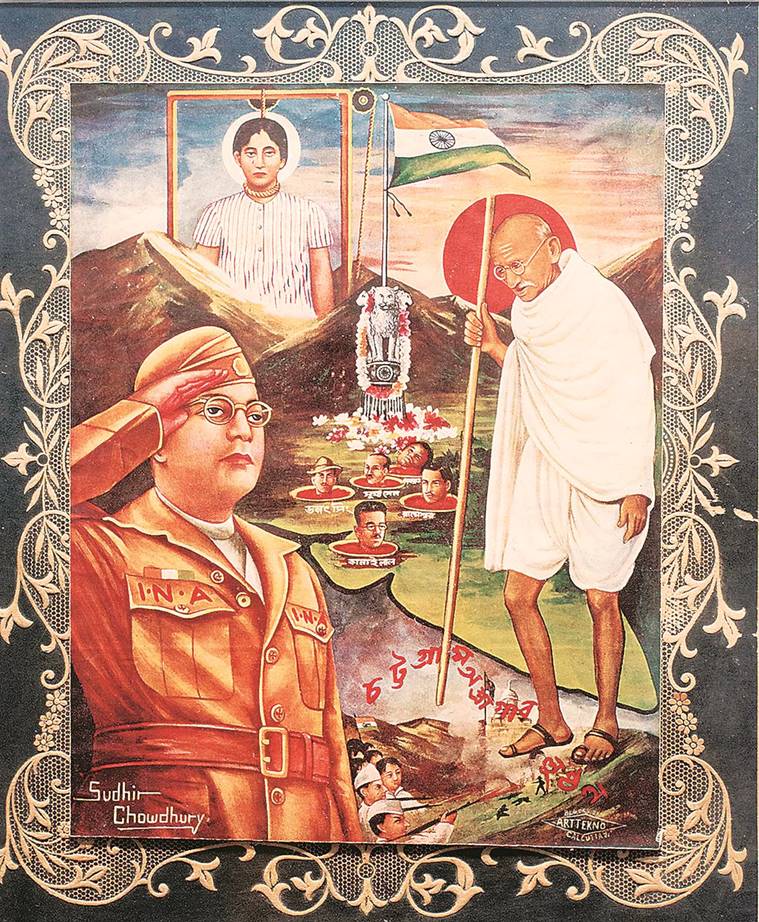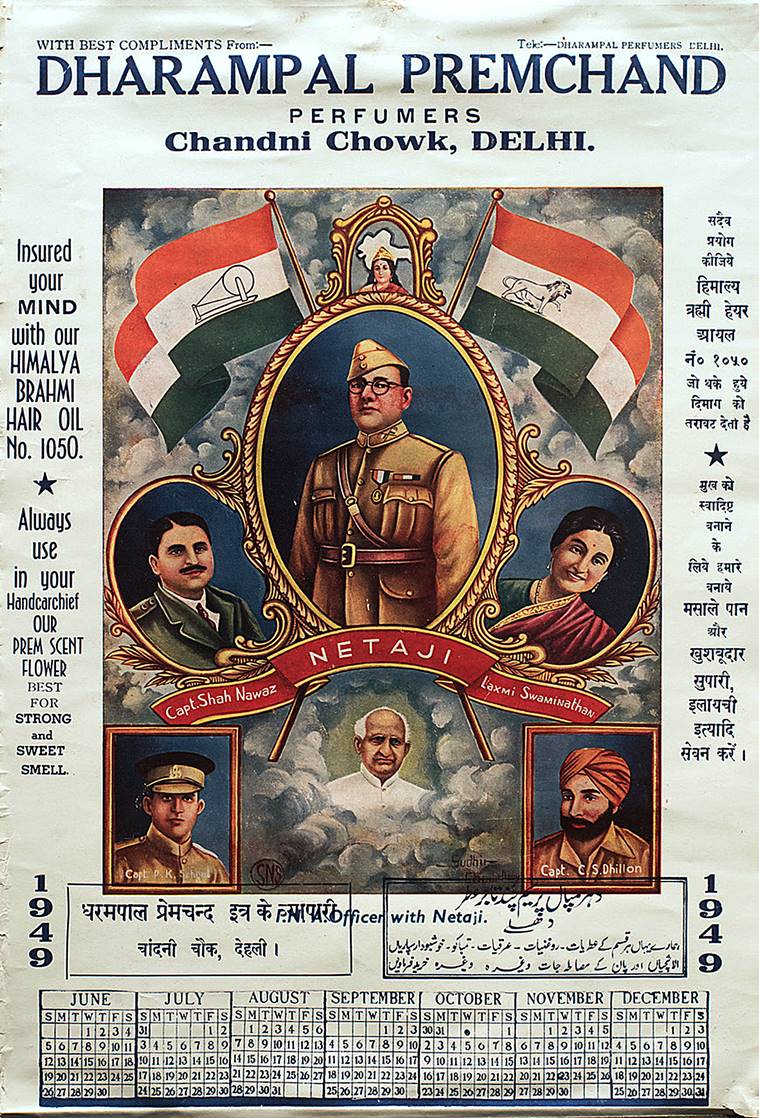Before Midnight
An exhibition of collages at Chatterjee and Lal in Mumbai gives insights into the local sentiments during the freedom struggle

Works from the exhibition (Courtesy: Aditya Ruia and Chatterjee & Lal)
It was at a public lecture by art and culture historian Jyotindra Jain that Aditya Ruia first heard of the strange and beautiful collages, which were once collected by the residents of Shekhawati in northeast Rajasthan and possibly made by local artists. The lecture was a part of a programme devised around Jain’s exhibition “Indian Popular Culture: The Conquest of the World as Picture”, which was held at the National Gallery of Modern Art in New Delhi and Mumbai in 2004. A collection of Shekhawati collages was included in the show. These works, featuring images of Indian leaders and freedom fighters pasted on painted backgrounds, spoke eloquently of the local understanding of India’s independence movement. They intrigued Ruia so much that he decided to go to Shekhawati to research this art form.
The results of Ruia’s research are currently on display at Chatterjee and Lal in Colaba, Mumbai. Most of the collages at the exhibition, “What Freedom Looks Like”, were made between 1930 and 1955, overlapping with the growing momentum in India’s freedom struggle. It’s not surprising to encounter such familiar historical figures as Mahatma Gandhi, Jawaharlal Nehru, Subhash Chandra Bose and Sardar Vallabhbhai Patel. What is surprising, however, are the settings in which the viewer finds them — Gandhiji’s tall figure looms over a pristine, riverine landscape in one work, while, in another, he strolls through the kind of palace complex that featured in miniature paintings, complete with fountains and manicured gardens. Ruia explains that the backgrounds, in most of these collages, were made by women painters in Nathdwara, who would produce such backgrounds as a way of supplementing their income. These backgrounds were in keeping with the traditions of painting that had developed in the region over the centuries, although the contents that were eventually pasted on them brought in a distinct contemporary flavour. “The artists who made these collages were using their works to disseminate information about what was unfolding across the larger canvas of the country,” says Ruia.
The works used to be sold by frame makers in places such as Delhi and Jodhpur and were bought by traders from Shekhawati, who had travelled to Bombay, Calcutta and other big cities and developed a cosmopolitan taste and outlook during their time there. “We can’t say for sure if the purpose of buying and displaying these works was political, but they were hung in the so-called ‘Mardana’ section of their houses. This was a semi-public space, where the men would sit together and conduct their business of selling goods or lending money,” says Ruia.
Still, the political leanings of the artists who made some of these works, and the patrons who bought them, can be guessed based on the contents of the collages. In one work, for example, we see Gandhi seated pensively in a sumptuous garden while, behind him, stands the figure of Krishna. This can be read as the artist’s belief that, much like the lord in the battlefield of Kurukshetra, Gandhi had tough decisions to make. In another work, we see Bose, dressed in royal robes, standing to one side of the picture, while Gandhi, Nehru and Patel are at the other end. The pathway behind the trio is zigzagged, while the one behind Bose is straight — a clear indication of the side on which the artist’s sympathy lay.
Together, the works on display in “What Freedom Looks Like” paint a picture of popular concerns about the freedom struggle and the leaders associated with it, and give a unique insight into a significant historical period. “One of the reasons for putting on this show is that people have not fully recognised the value of these collages,” says Ruia, “Art isn’t just about what is painted on a canvas. Even works like the Shekhawati collages need to be looked at seriously, because they give us some insight into the period during which they were made.”
For all the latest Lifestyle News, download Indian Express App






















 Works from the exhibition (Courtesy: Aditya Ruia and Chatterjee & Lal)
Works from the exhibition (Courtesy: Aditya Ruia and Chatterjee & Lal)
No hay comentarios:
Publicar un comentario